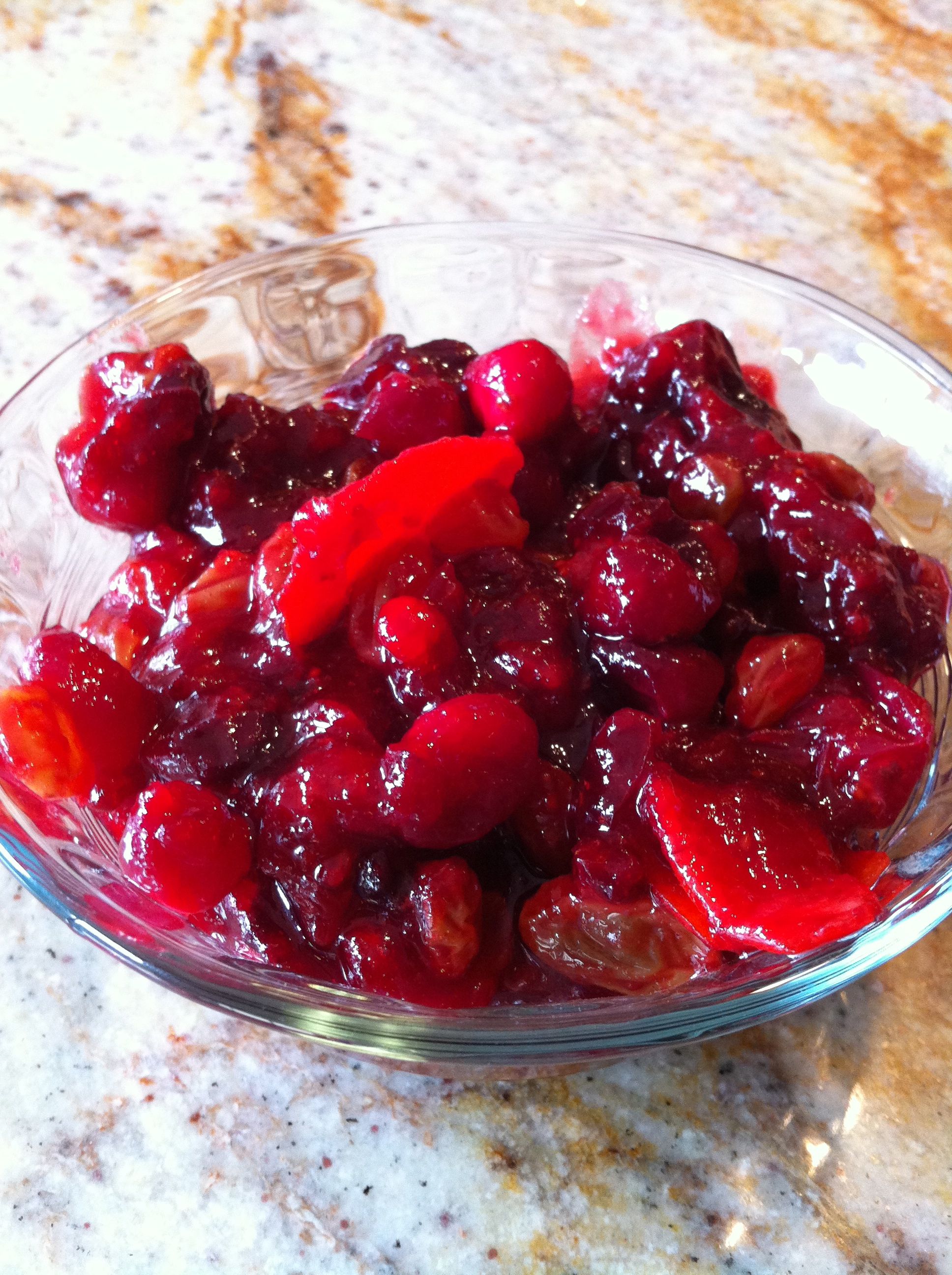Here's a recipe that results in a succulent, melt-in-your-mouth pork loin, just in time for this cold weather and friends.
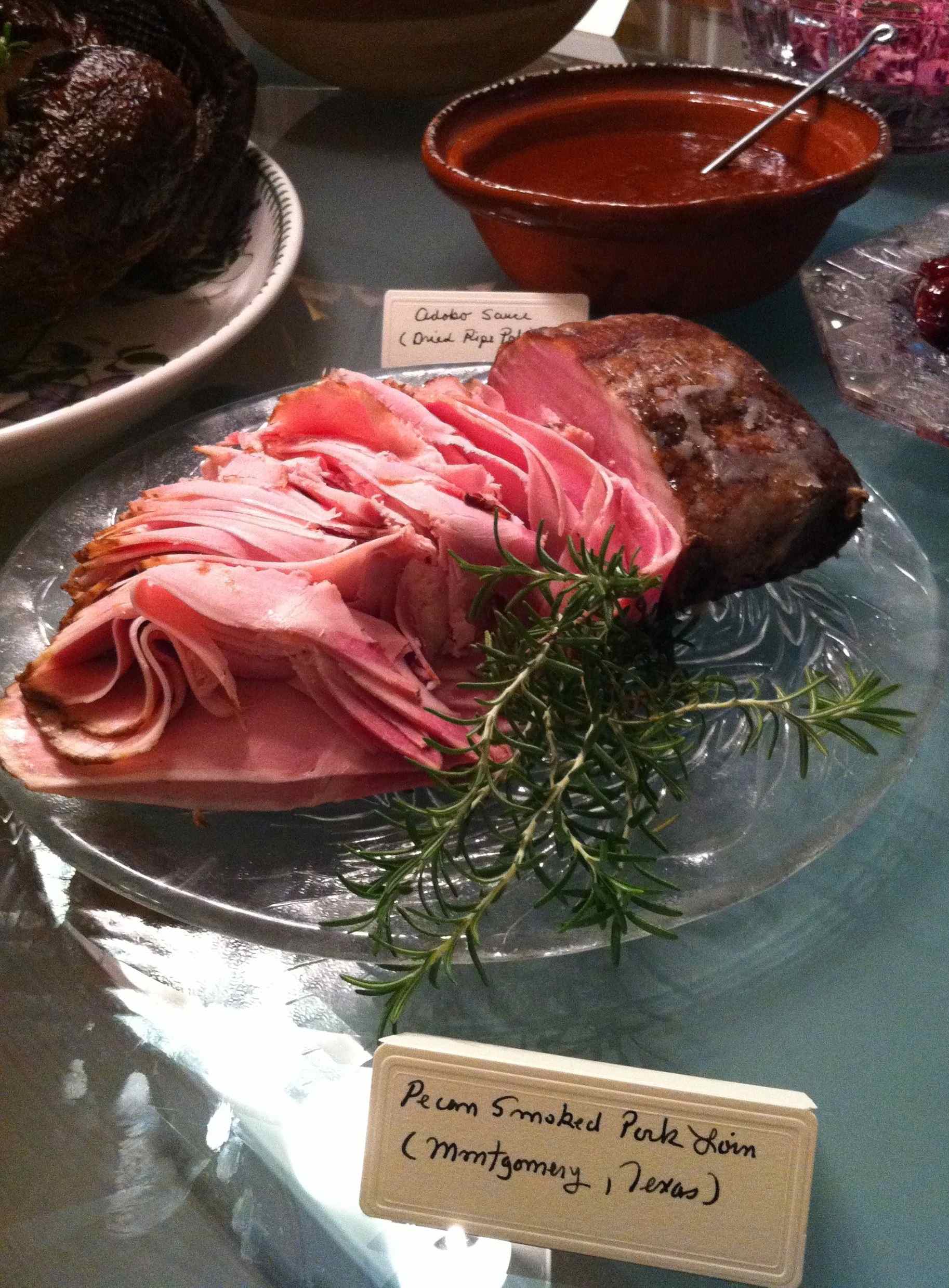 By keeping the temperature at 185º F and making sure the smoke does not turn densely white, the smoke flavor is subtle, sweet. I'm feeling giddy since I served it, so I'll paraphrase a line from the movie, Who's Killing the Great Chefs of Europe: "ever-new arising vistas of harmonizing flavors!"
By keeping the temperature at 185º F and making sure the smoke does not turn densely white, the smoke flavor is subtle, sweet. I'm feeling giddy since I served it, so I'll paraphrase a line from the movie, Who's Killing the Great Chefs of Europe: "ever-new arising vistas of harmonizing flavors!"
ok, slap back to real.
Recipe
This is the formula for the brine that I use. It makes 3 gallons and is plenty for two 3-lb pork loins:
2 1/2 gallons room temperature water
1/2 gallon ice
2 lb salt
1 lb brown sugar
1 ounce TCM (tinted curing mixture) Note: Being aware of the pros and cons of nitrates and nitrites in TCM, I think a moderate use is prudent and good. You may omit the TCM and your smoked meat will turn out fine.
Method:
1. Add the sugar, salt and TCM to the water and stir until completely dissolved.
2. Add the ice to cool the brine.
3. Cut off excess fat and weigh the pork loins. Inject them with an amount of brine that equals 10% of their weight. Injected brine for a 3 lb pork loin would be thus: 3 lb loin X 16 ounces = 48 ounces.
Then 48 ounces X .10 = 4.8 ounces. So you'd inject 4.8 ounces of brine. (it's convenient that 1 fl. oz. of water weighs 1 oz.)
4. Place them in a stainless steel or plastic container and completely cover them with the brine. Top them with a heavy dish to keep them submerged.
5. After three days of brining, remove them, rinse with fresh water and pat them dry.
6. Air dry them to form a pellicle according to the method that we used for the Thanksgiving turkey.
7. Then smoke the pork in Pecan wood, also according to the method used for the Thanksgiving turkey.
8. Smoke for 4-6 hours or until the internal temperature is 155º F.
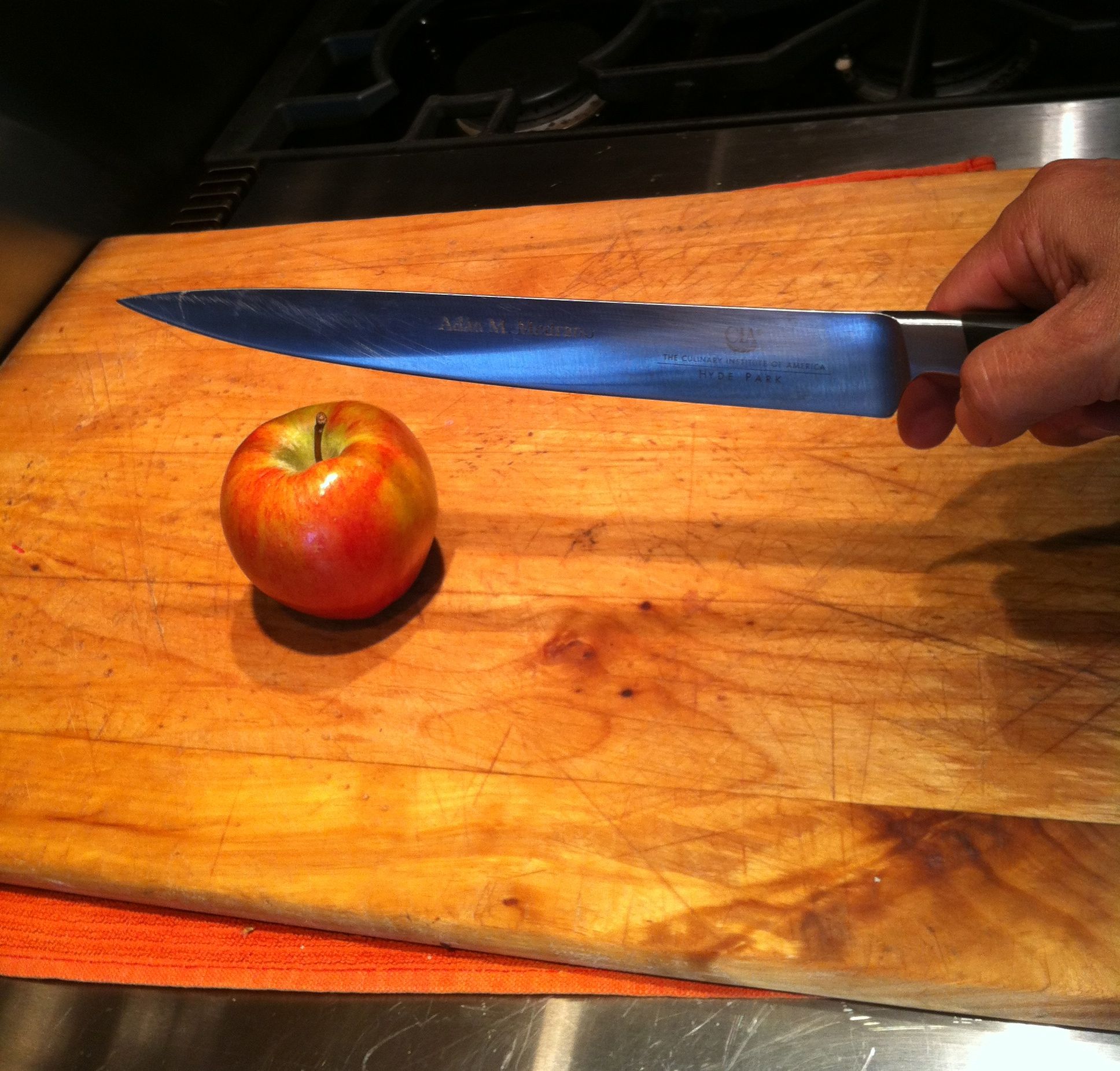
Knife Skills and Slicing:
When I served it at the buffet table, the slices were ultra thin, as you can see. This makes for a beautiful presentation but also adds to the melt-in-your-mouth texture. Ackowledgement is due the CIA for their strong chef training programs. When I was at the CIA our class of 18 culinary students was drilled for 3 weeks in "precision knife skills." It takes a lot of practice, and you use a very long slicing knife that is razor sharp.
Chef Kevin Babbitt, fellow CIA grad, helped me prepare the buffet feast and to him goes the credit for slicing the pork and arranging it as you see it laid out in the picture. He is a highly talented young fine dining chef who is making a great career. If you'd like to write to him and congratulate him, his email address is: one.k.babbitt@hotmail.com
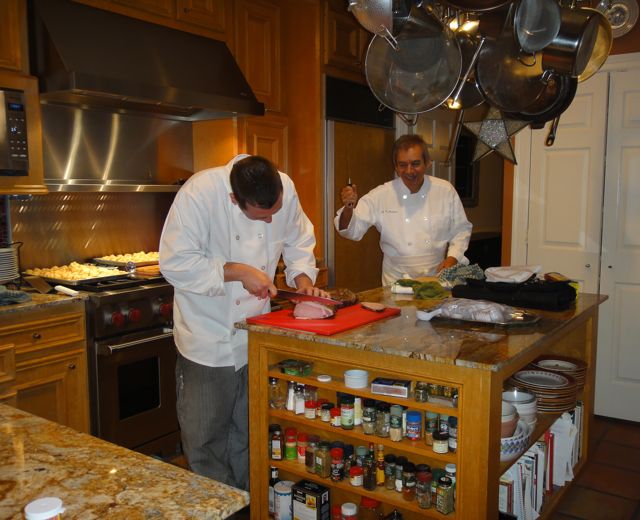 Here I am encouraging Chef Kevin Babbitt to cut the pork wafer-thin and with precision! Bon Appétit.
Here I am encouraging Chef Kevin Babbitt to cut the pork wafer-thin and with precision! Bon Appétit.
 By keeping the temperature at 185º F and making sure the smoke does not turn densely white, the smoke flavor is subtle, sweet. I'm feeling giddy since I served it, so I'll paraphrase a line from the movie, Who's Killing the Great Chefs of Europe: "ever-new arising vistas of harmonizing flavors!"
By keeping the temperature at 185º F and making sure the smoke does not turn densely white, the smoke flavor is subtle, sweet. I'm feeling giddy since I served it, so I'll paraphrase a line from the movie, Who's Killing the Great Chefs of Europe: "ever-new arising vistas of harmonizing flavors!" ok, slap back to real.
Recipe
This is the formula for the brine that I use. It makes 3 gallons and is plenty for two 3-lb pork loins:
2 1/2 gallons room temperature water
1/2 gallon ice
2 lb salt
1 lb brown sugar
1 ounce TCM (tinted curing mixture) Note: Being aware of the pros and cons of nitrates and nitrites in TCM, I think a moderate use is prudent and good. You may omit the TCM and your smoked meat will turn out fine.
Method:
1. Add the sugar, salt and TCM to the water and stir until completely dissolved.
2. Add the ice to cool the brine.
3. Cut off excess fat and weigh the pork loins. Inject them with an amount of brine that equals 10% of their weight. Injected brine for a 3 lb pork loin would be thus: 3 lb loin X 16 ounces = 48 ounces.
Then 48 ounces X .10 = 4.8 ounces. So you'd inject 4.8 ounces of brine. (it's convenient that 1 fl. oz. of water weighs 1 oz.)
4. Place them in a stainless steel or plastic container and completely cover them with the brine. Top them with a heavy dish to keep them submerged.
5. After three days of brining, remove them, rinse with fresh water and pat them dry.
6. Air dry them to form a pellicle according to the method that we used for the Thanksgiving turkey.
7. Then smoke the pork in Pecan wood, also according to the method used for the Thanksgiving turkey.
8. Smoke for 4-6 hours or until the internal temperature is 155º F.

Knife Skills and Slicing:
When I served it at the buffet table, the slices were ultra thin, as you can see. This makes for a beautiful presentation but also adds to the melt-in-your-mouth texture. Ackowledgement is due the CIA for their strong chef training programs. When I was at the CIA our class of 18 culinary students was drilled for 3 weeks in "precision knife skills." It takes a lot of practice, and you use a very long slicing knife that is razor sharp.
Chef Kevin Babbitt, fellow CIA grad, helped me prepare the buffet feast and to him goes the credit for slicing the pork and arranging it as you see it laid out in the picture. He is a highly talented young fine dining chef who is making a great career. If you'd like to write to him and congratulate him, his email address is: one.k.babbitt@hotmail.com
 Here I am encouraging Chef Kevin Babbitt to cut the pork wafer-thin and with precision! Bon Appétit.
Here I am encouraging Chef Kevin Babbitt to cut the pork wafer-thin and with precision! Bon Appétit.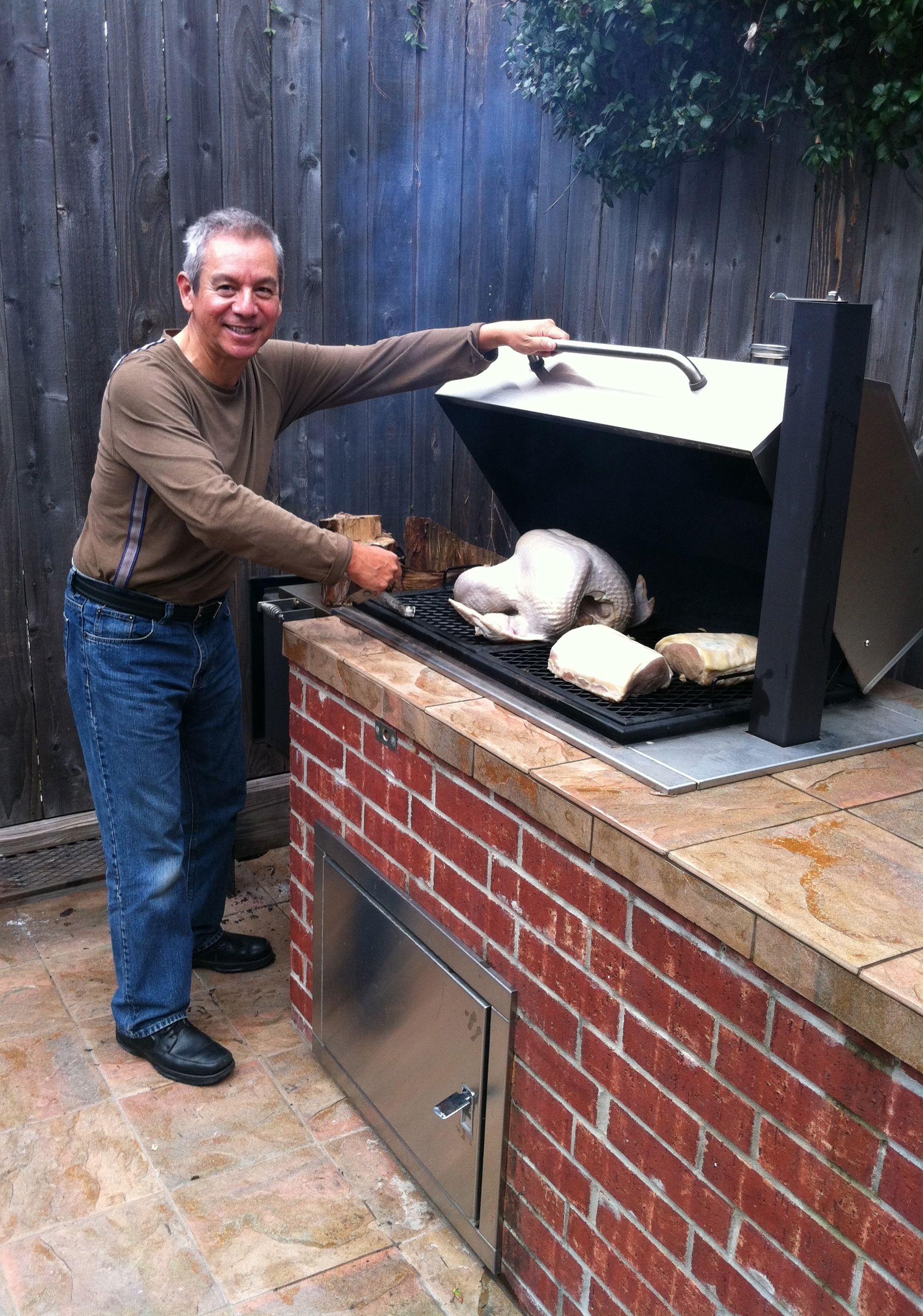 Karla McLaughlin drove all the way to my home to deliver this 15 pound organic-fed, free-roaming turkey and two pork loins. She generously took the time because I was in a pinch, facing a party deadline. She is a one-of-a-kind farm owner. Knowledgeable, caring and meticulously strict about raising the turkeys and other animals that she and her husband, John, tend on their farm.
Karla McLaughlin drove all the way to my home to deliver this 15 pound organic-fed, free-roaming turkey and two pork loins. She generously took the time because I was in a pinch, facing a party deadline. She is a one-of-a-kind farm owner. Knowledgeable, caring and meticulously strict about raising the turkeys and other animals that she and her husband, John, tend on their farm.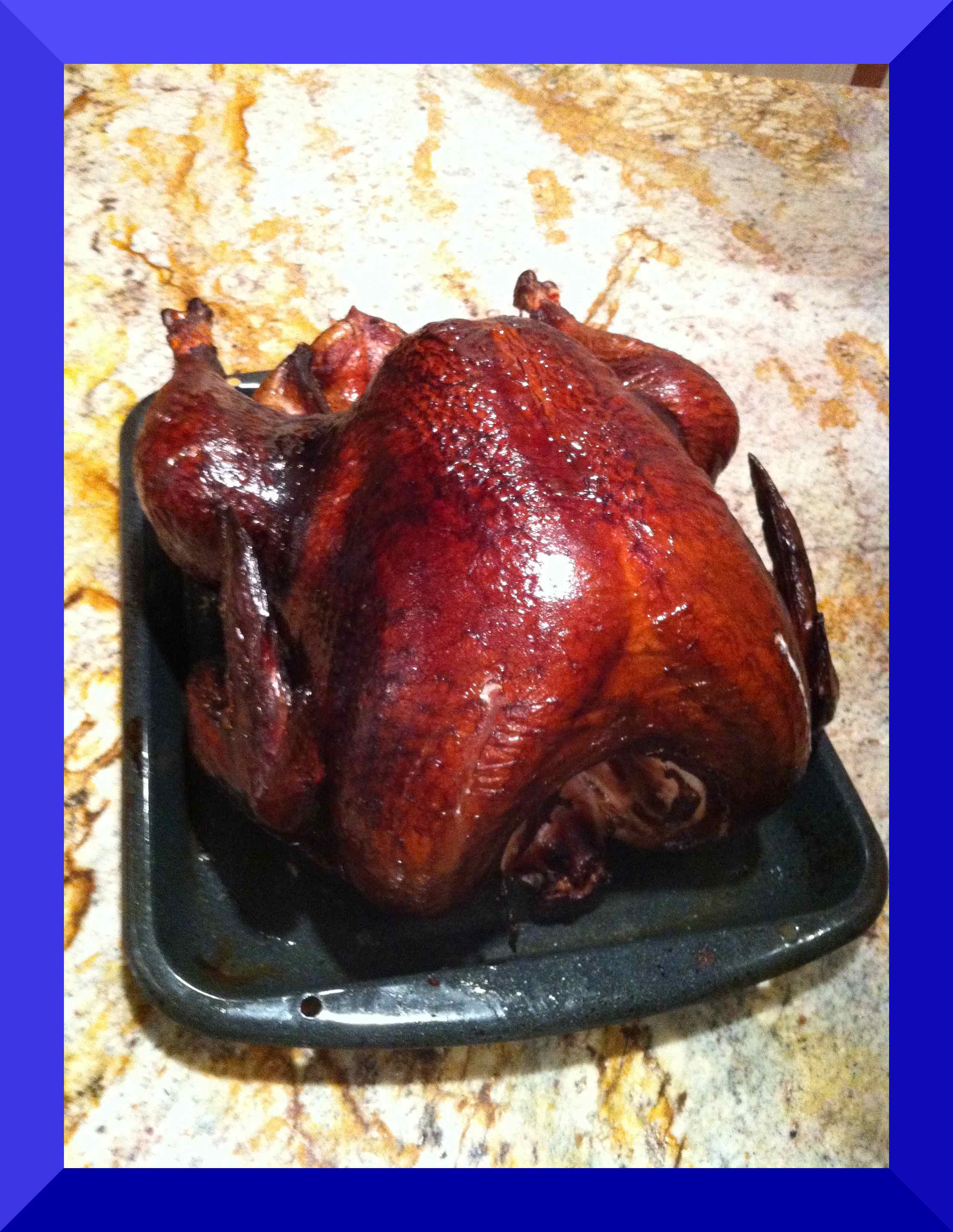
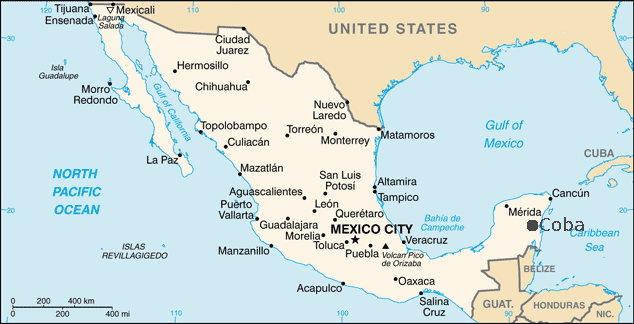 I've placed a dot on the location of Coba, Mexico, near Cancún.(1) This is where archeologists have found the earliest evidence of turkey remains. They are dated 100 BCE-100 CE. From there the turkey went north and populated North America, evidence of the vibrant trade and communication withiin the region pre-1400's. By the time the Spaniards arrived in Mexico, we had domesticated turkeys not just in Mexico but also in what is now the US New Mexico and Texas. Thereafter the turkey, wild and domesticated, populated the whole of the US and some of Canada. By your second beer, you will have pondered that we and the turkey go back a long way.
I've placed a dot on the location of Coba, Mexico, near Cancún.(1) This is where archeologists have found the earliest evidence of turkey remains. They are dated 100 BCE-100 CE. From there the turkey went north and populated North America, evidence of the vibrant trade and communication withiin the region pre-1400's. By the time the Spaniards arrived in Mexico, we had domesticated turkeys not just in Mexico but also in what is now the US New Mexico and Texas. Thereafter the turkey, wild and domesticated, populated the whole of the US and some of Canada. By your second beer, you will have pondered that we and the turkey go back a long way. 